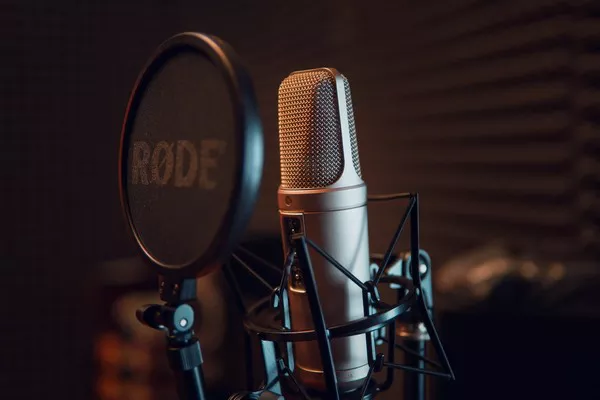The music industry has undergone a profound transformation in recent years, largely driven by the digital revolution. With the advent of streaming platforms like Apple Music, artists have gained access to a vast global audience, but the question remains: how do artists make money on Apple Music? In this article, we will delve into the various revenue streams available to musicians on the platform, offering insights into the complex ecosystem of music streaming and how artists can maximize their earnings.
Understanding the Streaming Landscape
Before we dive into the specifics of how artists make money on Apple Music, it’s essential to grasp the broader context of the streaming music landscape. Streaming platforms have become the dominant method of music consumption, overtaking physical sales and digital downloads. Apple Music, one of the major players in this arena, boasts millions of subscribers worldwide. However, the revenue generated from streaming can be quite different from the traditional model.
Streaming Royalties: The Foundation of Artist Earnings
The primary way artists make money on Apple Music is through streaming royalties. When a user streams a song on the platform, the artist earns a fraction of a cent, typically referred to as a per-stream rate. This rate can vary depending on several factors, including the user’s subscription level, the country where the stream occurs, and the artist’s contract with the record label or distributor.
The per-stream rate is often lower than what artists would earn from a traditional album sale or download. This is because streaming services like Apple Music offer a vast catalog of music for a fixed monthly subscription fee, which is divided among the rights holders based on the number of streams their songs receive.
The Role of Record Labels and Distributors
One crucial aspect of how artists make money on Apple Music is their relationship with record labels and distributors. Many artists sign contracts with record labels, which may provide them with an advance against future earnings, marketing support, and distribution services. However, these contracts often dictate how revenue from streaming is shared between the artist and the label.
In many cases, the label takes a significant portion of the streaming revenue, leaving the artist with a smaller share. The exact terms of these deals can vary widely, with some artists negotiating more favorable terms, especially if they have significant bargaining power or a proven track record.
Independent artists who distribute their music through digital distributors like TuneCore or DistroKid have more control over their streaming revenue. They typically receive a more substantial portion of the earnings, as they don’t have to share them with a record label.
The Impact of Subscription Tiers
Another factor that influences how artists make money on Apple Music is the subscription tier of the user. Apple Music offers several subscription options, including individual, family, and student plans. Each of these plans comes with a different monthly fee, and the revenue generated from each subscription is divided among rights holders accordingly.
For example, an artist may earn more from a user with a premium individual subscription than from a user on a family plan, as the individual subscription carries a higher monthly fee. Therefore, the mix of subscribers streaming an artist’s music can significantly impact their overall earnings on the platform.
Apple Music’s Payout Formula
Apple Music employs a payout formula to determine how much money artists receive from each stream. While the exact formula is not publicly disclosed, it typically involves factors like the total revenue generated by the platform, the number of streams an artist’s songs receive, and the region where the streams occur.
Apple Music then allocates a portion of the total revenue to the artist based on their share of the overall streams. This means that the more streams an artist’s songs accumulate, the more money they will earn. However, the per-stream rate can vary from month to month, making it challenging for artists to predict their income accurately.
Promotion and Discoverability
To increase their earnings on Apple Music, artists must focus on promoting their music and enhancing their discoverability on the platform. Apple Music provides various tools and features to help artists reach a broader audience. One such tool is Apple Music for Artists, which allows musicians to access insights about their listeners, track their performance, and customize their artist profile.
Additionally, artists can utilize playlists and algorithmic recommendations to boost their visibility. When a song is included in a popular playlist, it can result in a significant increase in streams, ultimately leading to higher earnings.
Live Performances and Merchandise Sales
While streaming royalties are a primary source of income for artists on Apple Music, they are not the only revenue stream. Live performances and merchandise sales remain essential components of an artist’s overall income. Streaming platforms like Apple Music can serve as powerful promotional tools to drive fans to attend concerts and purchase merchandise.
Artists can leverage their presence on Apple Music to announce tour dates, promote ticket sales, and engage with their fan base. This symbiotic relationship between streaming platforms and live events can contribute significantly to an artist’s financial success.
Sync Licensing and Placement Opportunities
Another avenue for artists to make money on Apple Music is through sync licensing and placement opportunities. This involves licensing their music for use in movies, TV shows, commercials, video games, and other media projects. When a song is used in a film or advertisement, the artist earns licensing fees and royalties.
Sync licensing can provide a substantial income stream, especially if a song gains widespread recognition through media placements. Artists can collaborate with music licensing agencies or sync placement services to increase their chances of securing these opportunities.
Direct Fan Engagement and Monetization
In recent years, many artists have turned to direct fan engagement and monetization strategies to supplement their income. Platforms like Patreon and crowdfunding websites allow artists to connect directly with their fans and offer exclusive content or experiences in exchange for financial support.
Additionally, some artists have explored alternative revenue streams, such as selling digital downloads, limited edition vinyl records, or merchandise directly to their fan base. These approaches enable artists to retain a more significant portion of the revenue compared to traditional distribution channels.
The Importance of a Diverse Revenue Portfolio
To thrive in the digital music landscape, artists must build a diverse revenue portfolio. Relying solely on streaming royalties may not be sufficient to sustain a successful career. By exploring multiple income streams, including live performances, merchandise sales, sync licensing, and direct fan engagement, artists can create a more stable financial foundation.
Navigating the Challenges
While there are opportunities for artists to make money on Apple Music and other streaming platforms, there are also challenges and criticisms associated with the current model. Some argue that the per-stream rates are too low to adequately compensate artists, especially independent musicians who lack the bargaining power of major record labels. This has sparked discussions and movements advocating for fairer compensation for artists in the streaming era.
Additionally, the streaming model has shifted the focus towards single tracks rather than full albums, which can affect artistic expression and creativity. Artists may feel pressured to produce hit singles rather than explore more expansive, album-length concepts.
Conclusion
In the ever-evolving landscape of the music industry, understanding how artists make money on Apple Music is crucial for musicians seeking to navigate the digital era successfully. While streaming royalties remain a significant income source, artists should explore a range of revenue streams, including live performances, merchandise sales, sync licensing, and direct fan engagement, to build a sustainable career.
Ultimately, the key to financial success for artists on Apple Music lies in a combination of factors, including effective promotion, fan engagement, and business acumen. By leveraging the platform’s tools and features, along with other income opportunities, artists can create a more stable and prosperous future in the world of streaming music.


























